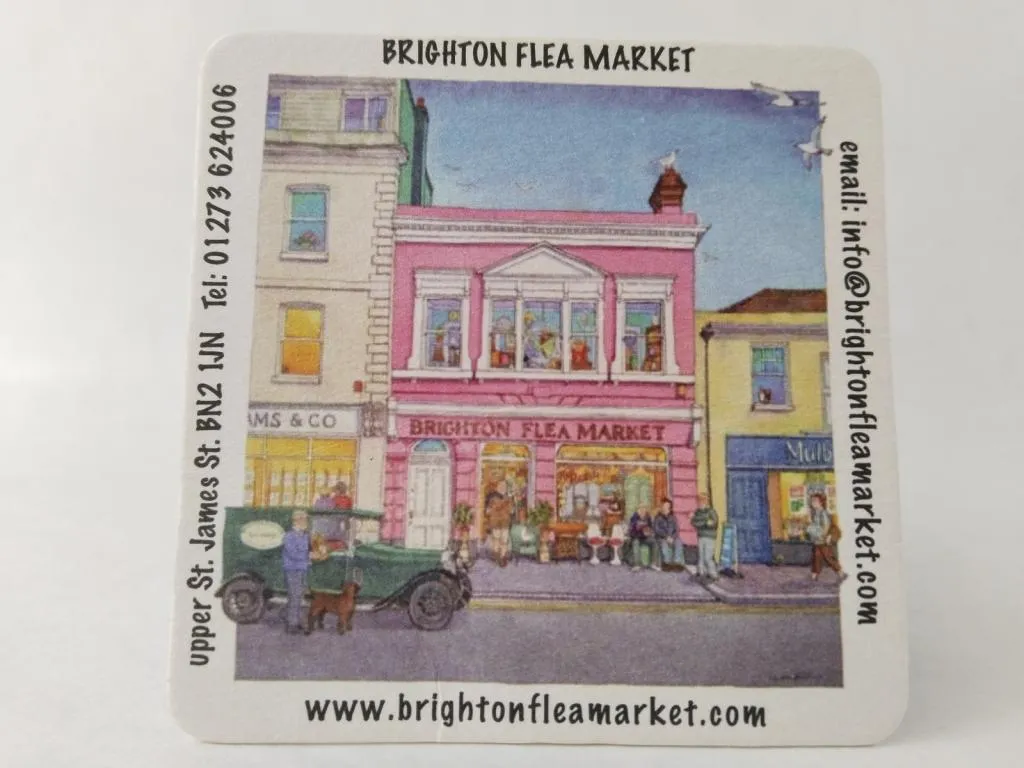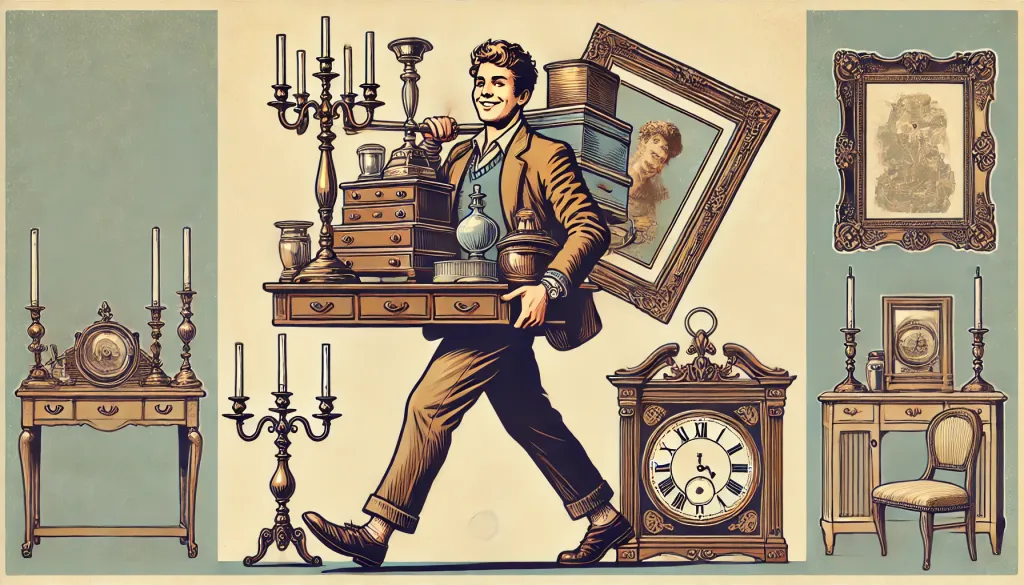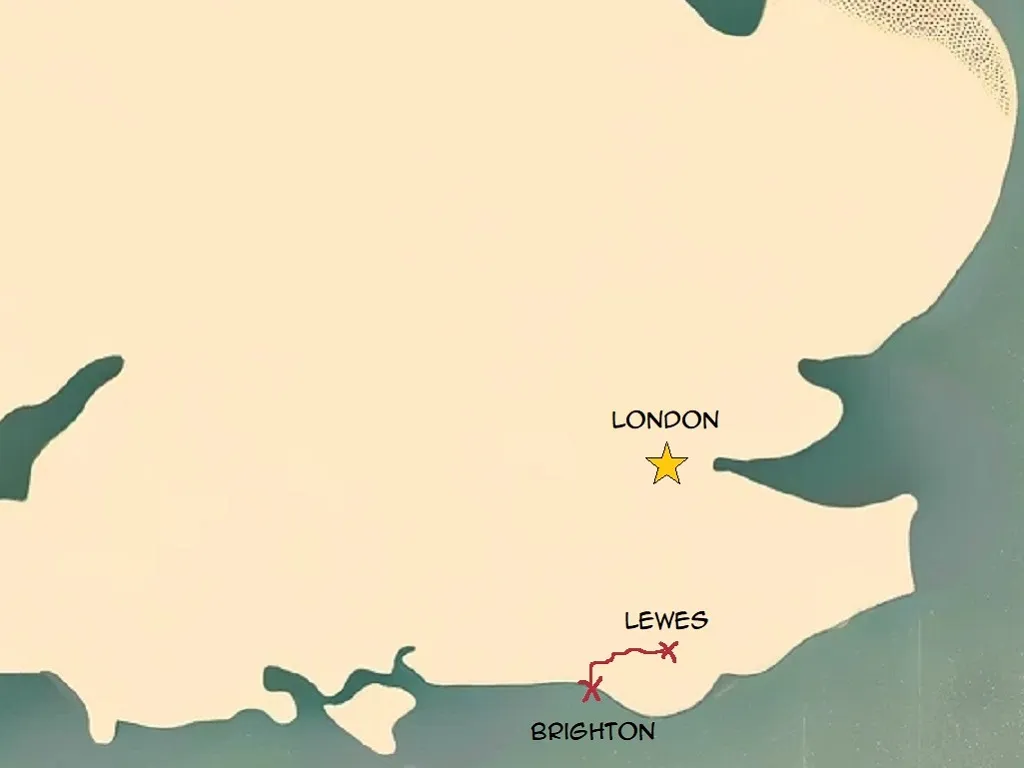Mastering Your Antique Treasure Hunt: Insider Tips for Visiting Antique Centers
This guide provides essential tips for successful antique treasure hunting, including the best times to visit antique centers, how to find hidden gems, and effective negotiation strategies. Transform your next antique outing into a fruitful quest with these expert insights.
Dive into the world of antique hunting with this detailed guide! Whether you're a seasoned collector or a curious newcomer, these insider tips will enhance your treasure-hunting experience and help you uncover valuable antiques.
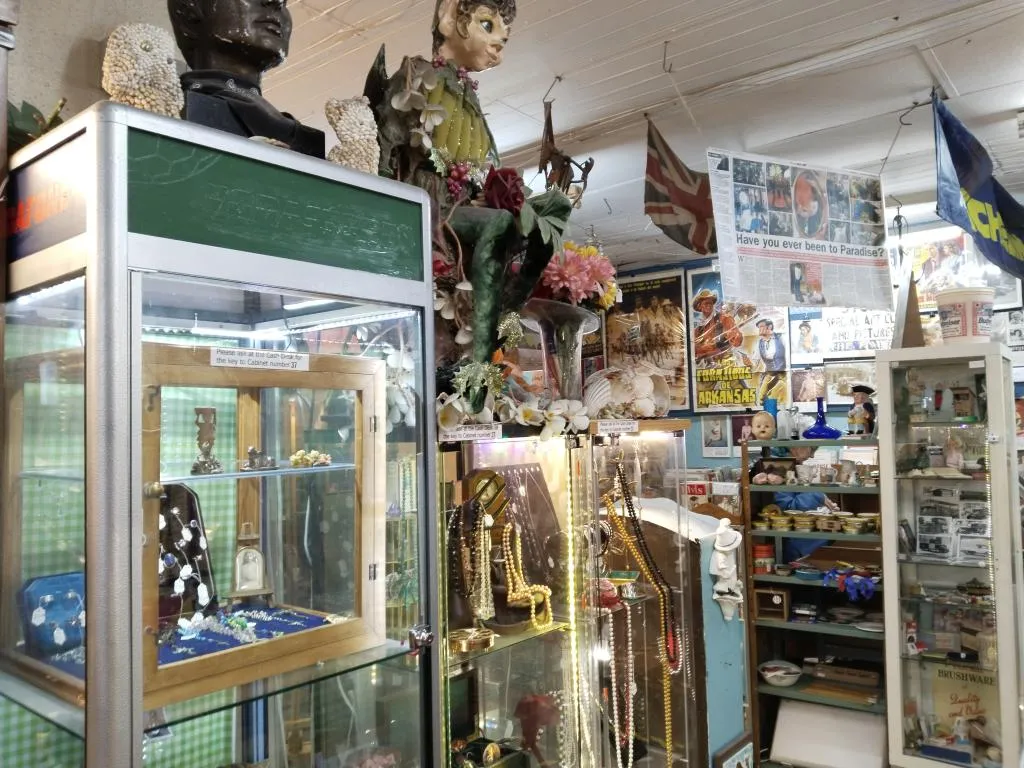
Source: By Stable MARK - own work
Table of Contents
Planning Your Visit: The Best Time to Visit Antique CentersChoosing the Right Venue: Antique Centers vs. Antique FairsNavigating the Center: Curating Antique Items Inside CentersBeing Unburdened: Security Issues with Backpacks and Where to Leave ItHunting for Hidden Gems: Exploring Potential Hiding SpotsThe Rule To Access Locked CabinetsMaking Informed Decisions: Choosing and Identifying Valuable ItemsHandling Fragile Items: Ensuring SafetyEngaging with Sellers: Questions to AskChecking Prices OnlineMastering Negotiations: Bargaining TipsExpanding Your Search: Finding More ShopsSee Treasure Hunting Tips in Action!In the first blog post of the Antique Quest Chronicles series, I explained how to plan your next antique treasure hunt without breaking the bank. In this blog post, I’ll explain how and where to look for treasure items when you’ve already made it to the antique center.
Planning Your Visit: The Best Time to Visit Antique Centers
In my opinion, the best time to visit an antique center is on Tuesdays and Wednesdays. At the end of the week, especially on Saturdays, there are many visitors. The demand for antiques is higher, and bargaining becomes more difficult with many potential buyers. On Sundays and Mondays, some of these centers are usually closed. On Tuesday and Wednesday, especially before noon, there are very few visitors.
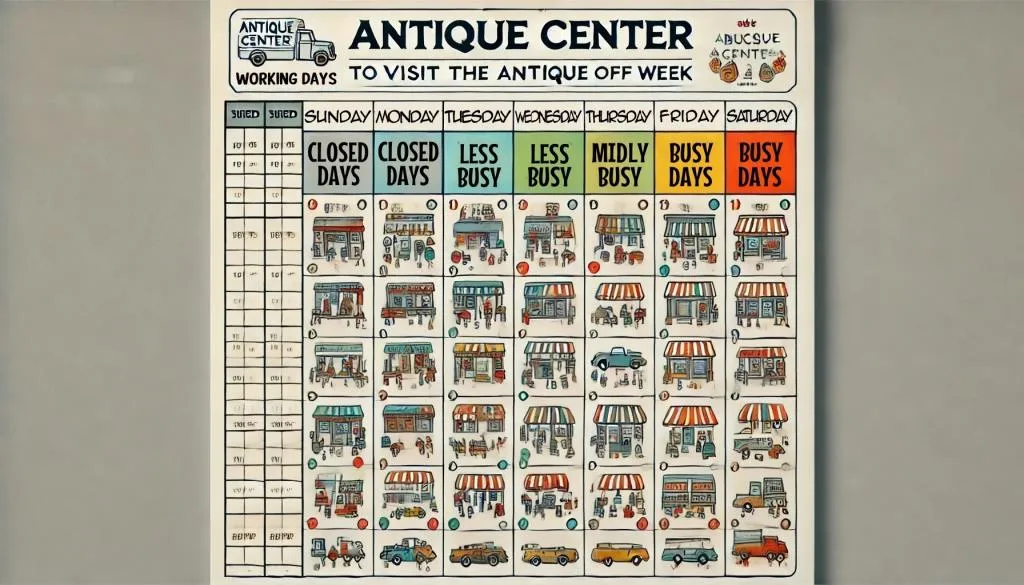
Source: AI Generated
On Tuesdays and Wednesdays dealers are curating and reorganizing their items. This gives you the chance to be the first to see new additions and speak directly with the dealer. You can ask questions about items you like, and negotiate the price face-to-face.
Some dealers are very knowledgeable about their items, while others know little about the origin or history of the antiques they sell. Asking questions about the origin or history of an item is always worth it.
Choosing the Right Venue: Antique Centers vs. Antique Fairs
Why I Prefer Antique Centers Over Antique Fairs
The short answer is that the chance of finding a forgotten treasure at a fair is close to zero. Sellers at fairs are well-prepared and plan what to bring. Items go through many hands before they reach the market, meaning many eyes have already seen them. While valuable items are certainly present, the likelihood that a seller is unaware of their value is slim.
Additionally, the “early bird gets the worm” rule applies to antique fairs. The earlier you arrive, the greater your chances of finding items with good margins. However, if the fair is abroad, getting there early requires arriving the previous day and staying in a hotel nearby, which can be costly.
Stories like Jessica Vincent from Virginia, who bought a Murano vase for $3.99 at a Goodwill store and sold it for $100,000, are rare. There are treasures at fairs, but luck plays a significant role. The more prepared you are, the luckier you get. I’ll give my hints on how to get lucky, but for now, let’s get back to antique centers.
Navigating the Center: Curating Antique Items Inside Centers
Understanding Layout and Security
Each antique center's interior is different, but there are commonalities in how items are arranged. The more valuable items are usually closer to the cash desk, likely for security reasons. Jewelry, valuable coins, gold, and stones are often in locked cabinets near the cash desk. The further from the cash desk you go, the cheaper the items are. On higher floors, you’ll typically find less expensive antiques. Basements usually contain old clothes, shoes, and suitcases.
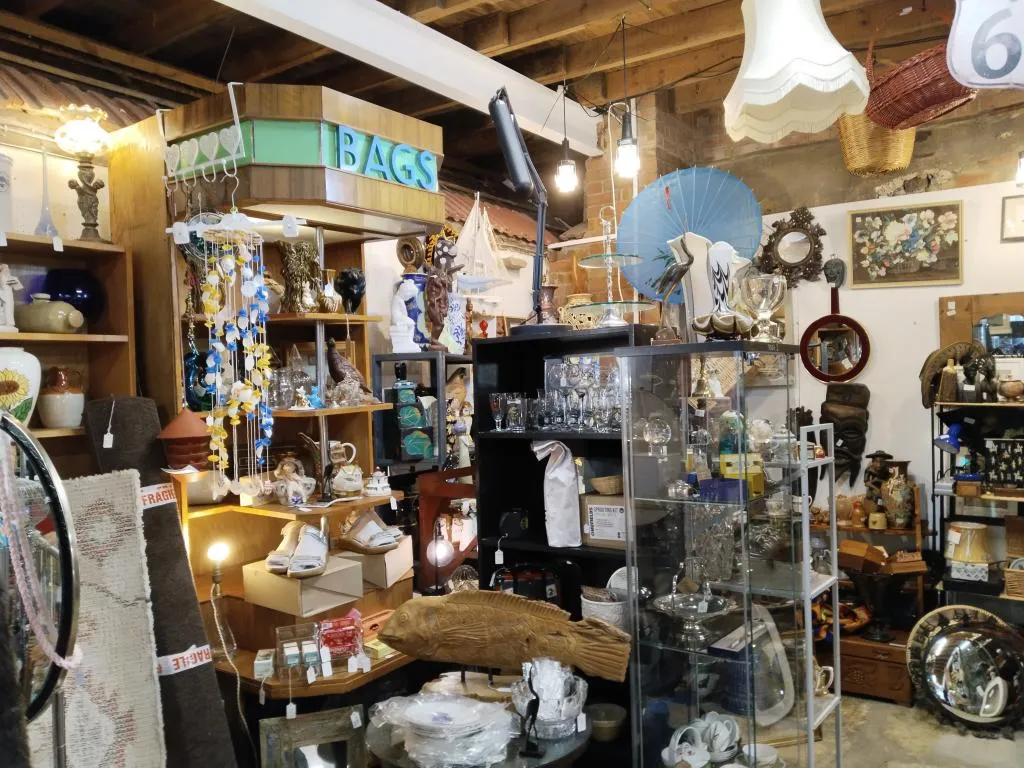
Source: By Stable MARK - own work
Security and Video Surveillance
Bear in mind that every antique center has video surveillance. You might notice screenshots of pickpockets displayed as a deterrent. Always be aware of your belongings, especially in crowded centers.
Being Unburdened: Security Issues with Backpacks and Where to Leave It
Some antique centers require you to leave your backpack at the cash desk for security reasons. This is advantageous as it frees you to move, turn, bend, and kneel without the risk of knocking over fragile items in narrow spaces. From my experience, leaving your backpack at the cash desk is safe and allows you to search for treasures more flexibly.
Hunting for Hidden Gems: Exploring Potential Hiding Spots
The best items are often well hidden or forgotten. Since antique centers offer items from various dealers, some treasures might be placed out of sight and forgotten for a long time. These are the treasures I hunt for – the ones not many eyes have seen.
Middle shelves, at eye level, are the most noticeable spots and typically showcase the best and freshest items. These items are often the first to sell. To find hidden treasures, you need to explore lower shelves, higher shelves, under tables, corners, the bottom of piles, and items hanging from the ceiling. Although you might not gain access to the owner's office or workshop, it's always worth asking.
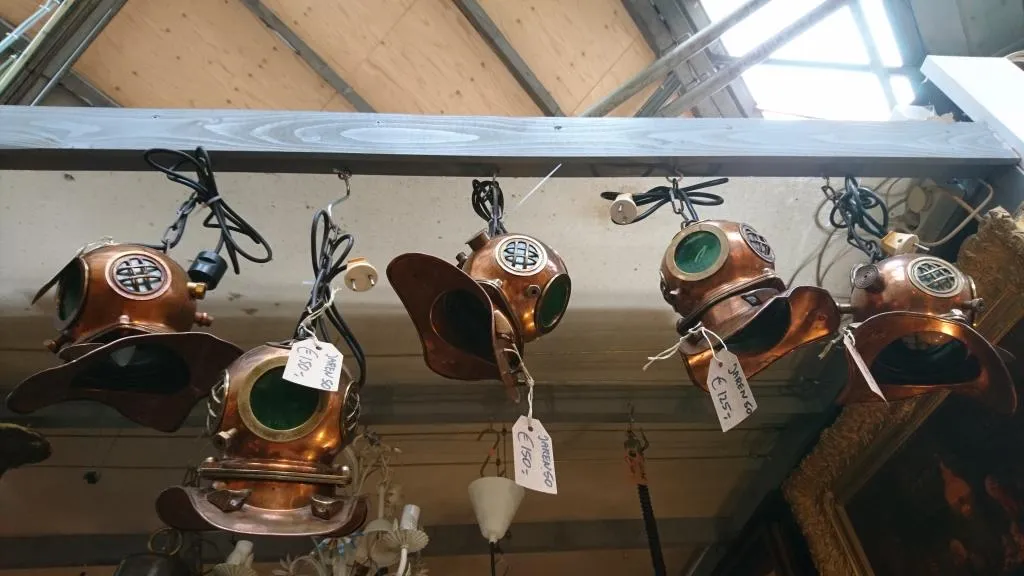
Source: By Stable MARK - own work
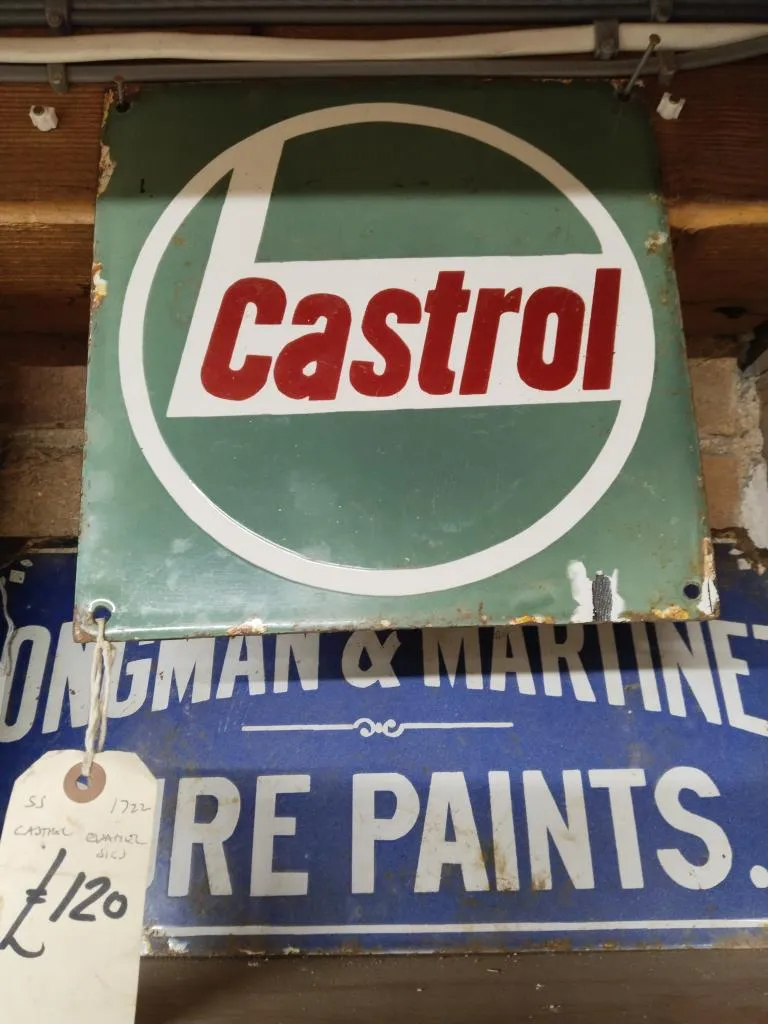
Source: By Stable MARK - own work
The Rule To Access Locked Cabinets
Locked cabinets have numbers. Ask the cash desk to open a specific cabinet. Don't feel obligated to buy it just because you asked them to open it. Examine the item thoroughly before making a decision.
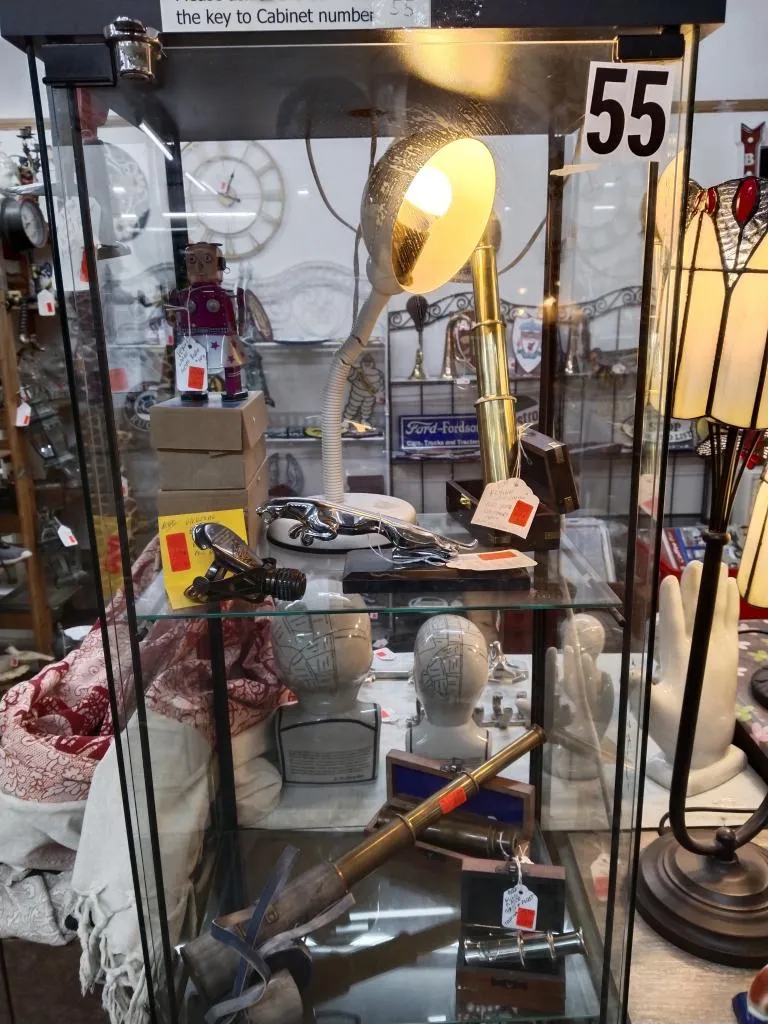
Source: By Stable MARK - own work
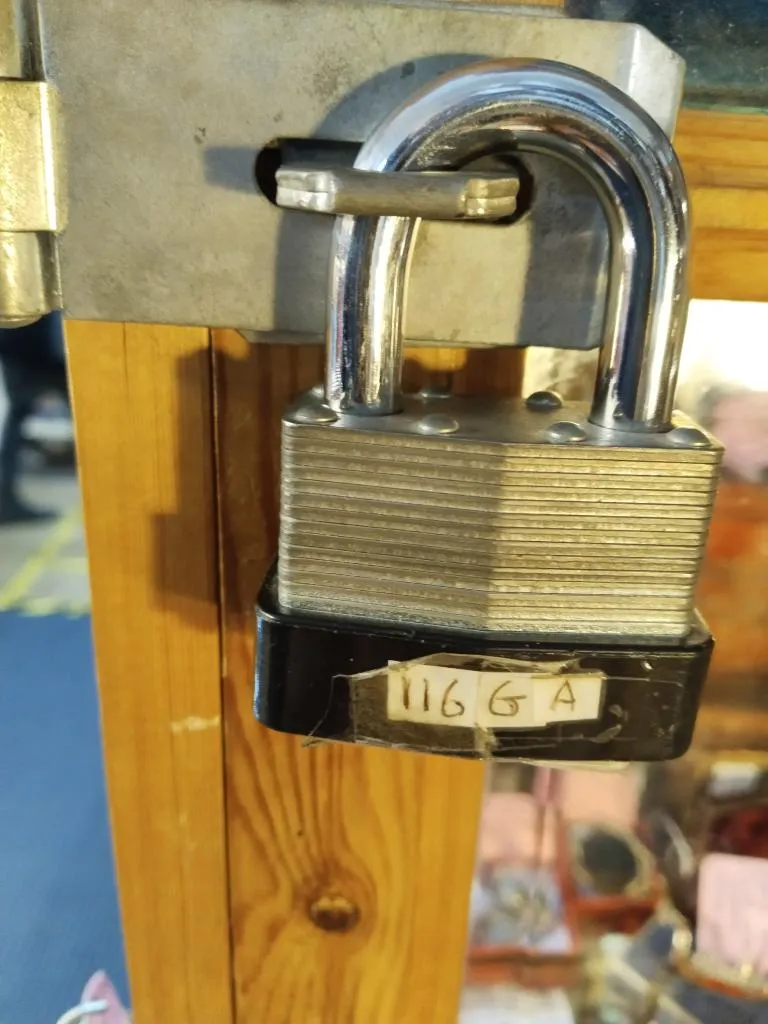
Source: By Stable MARK - own work
Making Informed Decisions: Choosing and Identifying Valuable Items
Choosing Items to Buy
Selecting an item can be challenging. Buy what resonates with your taste. If an item catches your eye and stays in your mind, it might be worth purchasing. Over time, your intuition and experience will guide you better.
To increase your chances of making a profit, look for items with maker’s marks, military marks, inventory marks, serial numbers, and especially dates or years. This helps in researching the item’s history and adds value. For example:
- An old padlock bearing the mark "Secure 4 Lever" without a maker's mark is hard to date precisely.
- A wooden ruler with a maker's mark and the owner's mark can be precisely dated and traced.
Condition and Authenticity
Ensure the item is in full working condition. No parts, original keys, labels, or stickers should be missing. Slight bends, scratches, or stains are acceptable and add character. For instance, a miner’s lamp with bends and cracks can appear more authentic. Sometimes, imperfections like cracks, holes, and paint flaws prove authenticity, as seen in decoy ducks with bullet holes and paint imperfections.
Identifying Valuable Items
Hidden treasures often have history woven into them. Look for maker’s marks, logos, years, and military usage marks. Original boxes increase an item’s value. Pay attention to the smell of old items – it's a good indicator of authenticity. Examine items thoroughly for cracks, missing parts, and functionality. Avoid newly polished items without signs of wear and original patina.
Handling Fragile Items: Ensuring Safety
Be cautious with ceramic, glass, and other fragile items. They can break easily, costing you money. If you buy such items, look for a tin box to store them safely. This way, you have a safe storage option and another vintage item for sale. If you buy a fragile item, ask at the cash desk for bubble wrap. If they don't have it, ask for wrapping paper or newspapers. Place your item in the tin box and crumple the paper around it. When packing, place fragile items on top of your backpack.
Engaging with Sellers: Questions to Ask
If you're looking for a particular item and can't find it, ask at the cash desk. They might help you find it. For instance, at Hungerford Arcade Antiques & Collectables, I asked for miner’s lamps and was surprised to find some I had missed.
Ask the seller about the origin of the item: Where did it come from? What is the item's story? Is there any significant previous owner? Who is the maker, if it is not obvious? How old is the item? Some items are boxed; others are not. Sometimes the box is not with or next to the item. Ask if there is an original box for that particular item. The answers to these questions will help you later do the item's research and will add value to your antique item.
Checking Prices Online
My advice is not to check prices online while in the center. Trust your instincts and experience. You will make mistakes and occasionally overpay, but that's part of the learning process. If you check prices online and see that there is not enough margin, you might decide not to buy the item. However, with thorough research, you might later discover significant historical value. I had such a case twice, and if I had checked the prices online, I would have missed those treasures.
Mastering Negotiations: Bargaining Tips
Cash is king – offer to pay cash for an immediate 10% discount. For further discounts on items over $100, insist that they ask the dealer. Another effective bargaining tactic is to create a pile of items and negotiate the total price. This works well in shops where the owner is also the seller. They are usually happy to sell more items and more open to negotiation. However, at antique centers, since items are from different dealers, they may not be able to offer an additional discount for multiple items.
Expanding Your Search: Finding More Shops
If you don't find any items you like, ask at the cash desk for recommendations on other shops. Surprisingly, many excellent shops are not even listed on Google. Word-of-mouth recommendations are invaluable.
By following these tips, you'll be well-prepared for your next antique treasure hunt.
See Treasure Hunting Tips in Action!
To see these tips in action, check out the first article in the Antique Quest Chronicles series, Discovering Sawbridgeworth's Maltings Antiques. Follow along as we explore a real treasure-hunting process and uncover hidden gems. Happy hunting!
Share this article
You may also like
